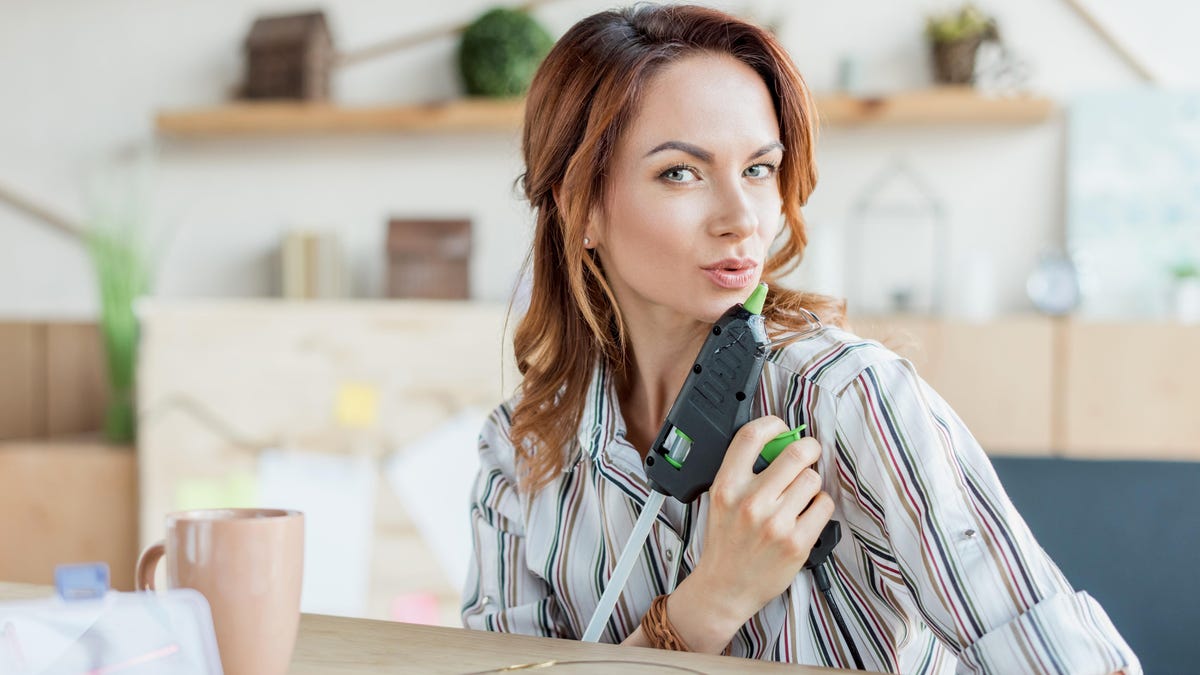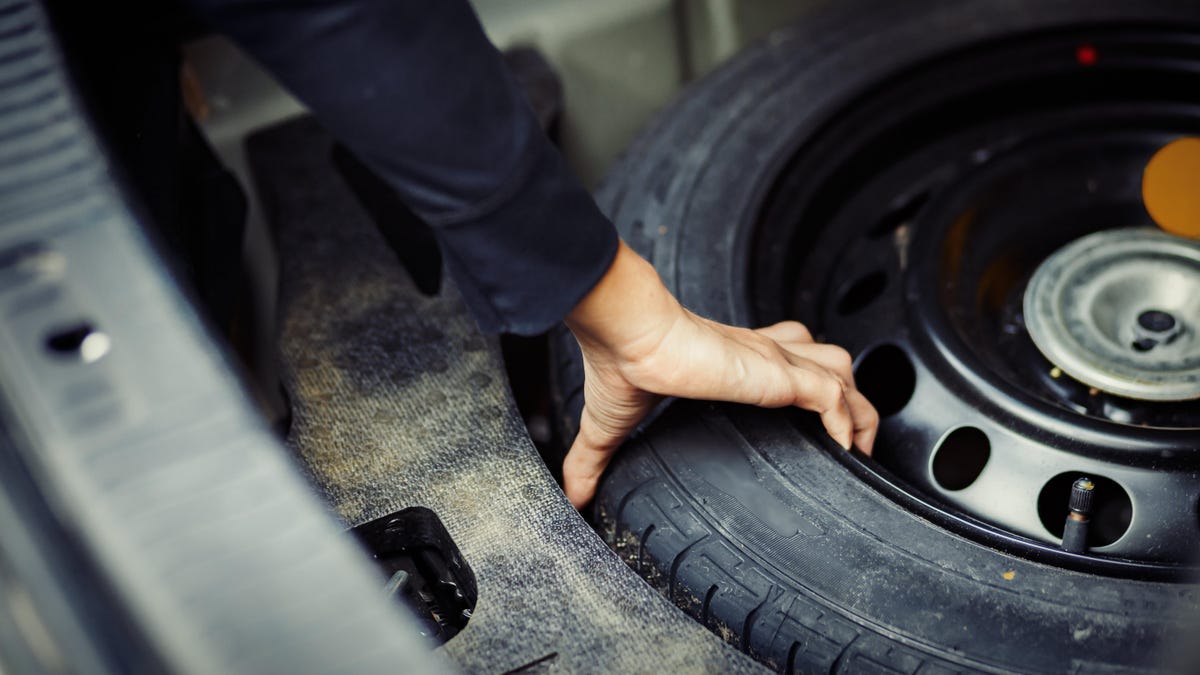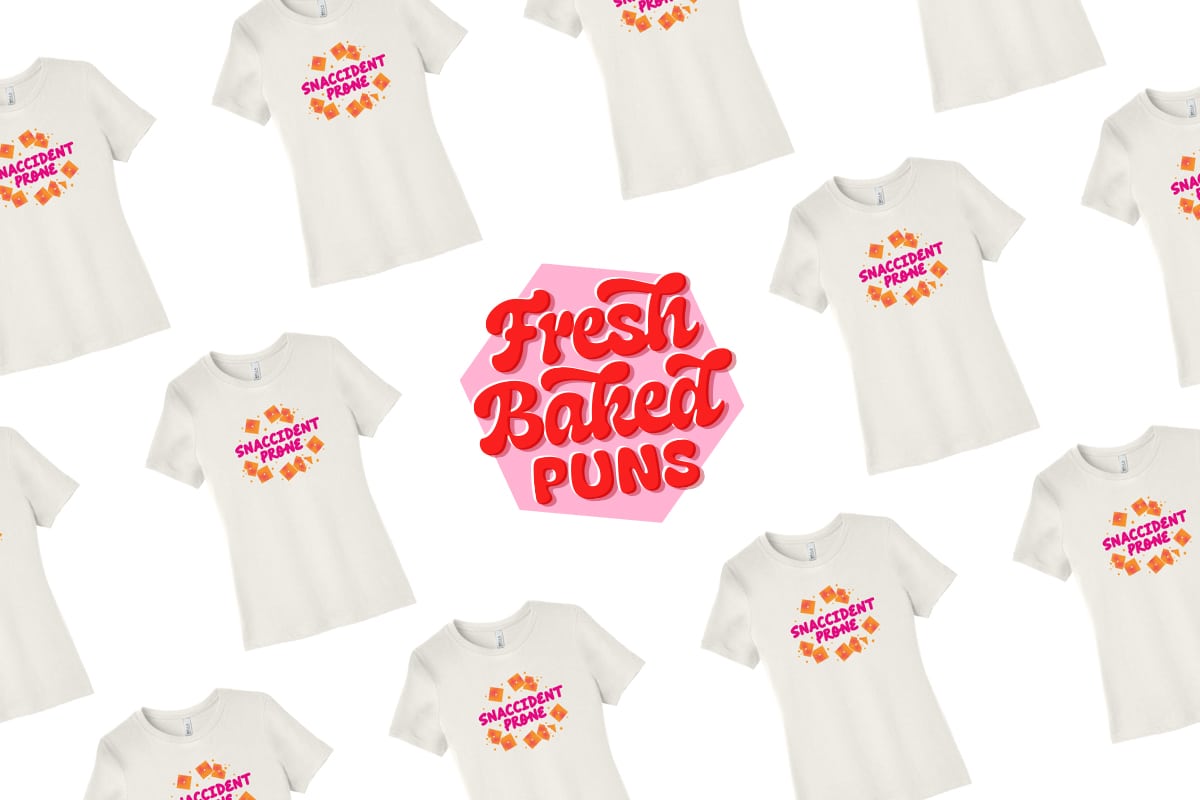Five Clever Ways You Should Be Using a Hot Glue Gun, But Aren’t
For most people, a hot glue gun seems like the kind of thing you would need for a homemade decoration or craft project. But glue guns have come a long way since your days of arts and crafts day...


Photo: LightField Studios (Shutterstock)
For most people, a hot glue gun seems like the kind of thing you would need for a homemade decoration or craft project. But glue guns have come a long way since your days of arts and crafts day at summer camp. Hot glue now comes in different types and colors, and you can do more with them than just decor.
Make a non-slip grip
When it dries, hot glue tends to be a rubbery consistency, so you can use it to make a non-slip grip. Apply a small amount to the top of a hanger to make it better at holding slippery clothes, put it on the bottoms of your slippers to keep from slipping on a slick floor, or use it on the bottom of a carpet for a non-skid layer that won’t damage your floors. When using hot glue in this application, just keep in mind that the surface you’re applying it to shouldn’t get warm enough to melt the glue—that could lead to a sticky mess.
Mount or hang a mirror
Use hot glue to mount a mirror to a frame or backing. You can use a high temperature glue gun and glue for mirrors, and it’s simple to do with very little clean-up. The difference when using this type of hot glue is that you need to pay attention to the heat specifications and the manufacturer’s recommended curing time. In addition to requiring a high temperature to work on glass, hot glue that’s meant for certain things will also need to set or cure for a period of time, so keep that in mind to avoid a disaster if you’re hanging a mirror.
G/O Media may get a commission
Make protective furniture feet
Hot glue can be used as protective feet for furniture legs or to protect the surface that a rough object, such as a flower pot, sits on. Use a dab of high temperature glue to make a dot about the size of the tip of your thumb on the bottom of a plant pot and repeat three or four times around the surface area to make little feet. To get your furniture to level, make sure all the glue dots are the same size. If a table or chair starts off wobbly, you can level it with your hot glue feet by making a slightly larger glue dot on whichever leg is short. Make sure that the glue is sufficiently cool before placing your pots or furniture on their feet to avoid adhering them in place.
Use in place of a clamp
If you have an oddly shaped wooden object that is difficult to clamp, you can use hot glue to make the joint stronger. Put some wood glue on the joint you’re making and then, in between the wood glue lines, put a few dabs of hot glue and then put the joint together. The hot glue can hold the joint firmly while the wood glue sets.
Make custom sheaths for your knives
If you have knives rattling around in a drawer, they probably rub into each other and get dull over time. You can solve this issue and protect yourself from accidental cuts while reaching into your knife drawer by making a sheath from hot glue. First, apply petroleum jelly all over the surface of the blade. Then, using low temp hot glue, cover the whole surface of the knife on both sides with hot glue. Wait for it to cool, remove the glue, and you have a custom knife protector.
Clean-up and safety
Removing hot glue if you spill it can be as simple as spritzing the glue with some isopropyl alcohol, or applying some alcohol to the edges of the glue with a swab. Then, use a scraper to carefully pry up and remove the glue. If you accidentally get glue on fabric, you can remove it by heating it with a hair dryer—not enough to completely melt it, but enough to loosen its bond. Then you should be able to peel it off. As always, wear proper safety equipment when working with tools: Heat resistant gloves and safety glasses are recommended.

 Tekef
Tekef 
































